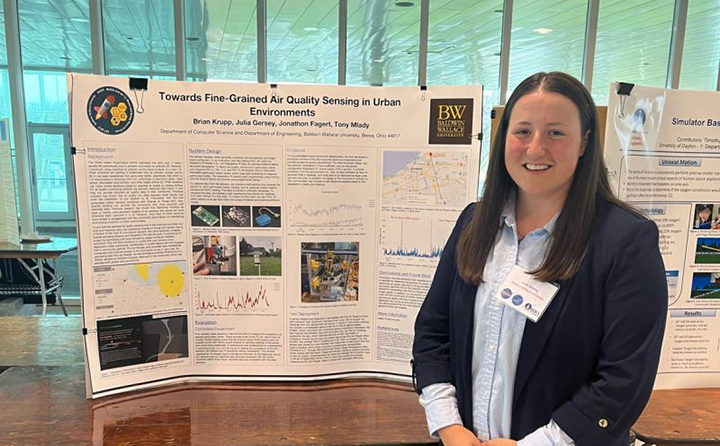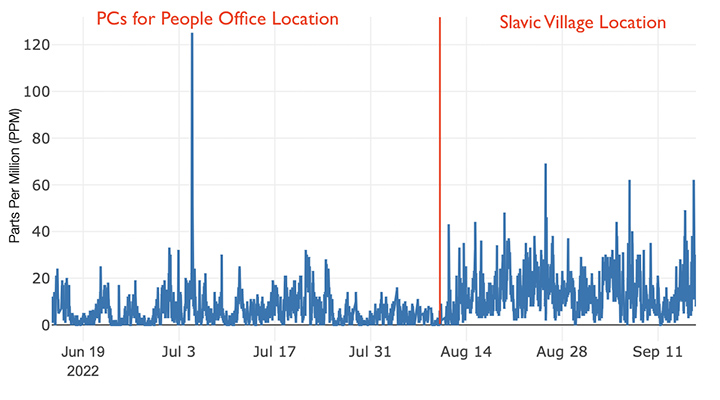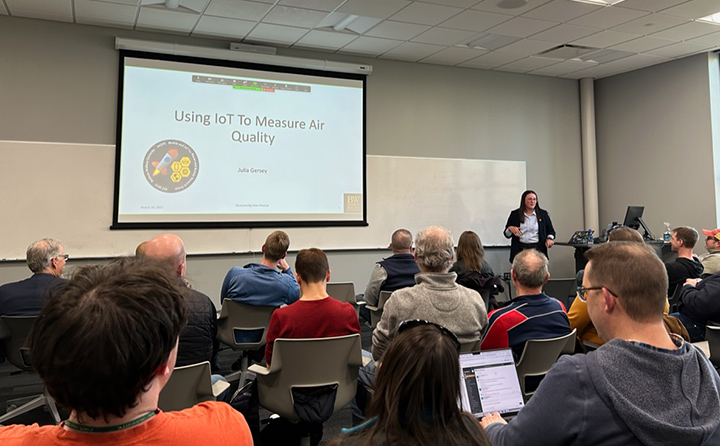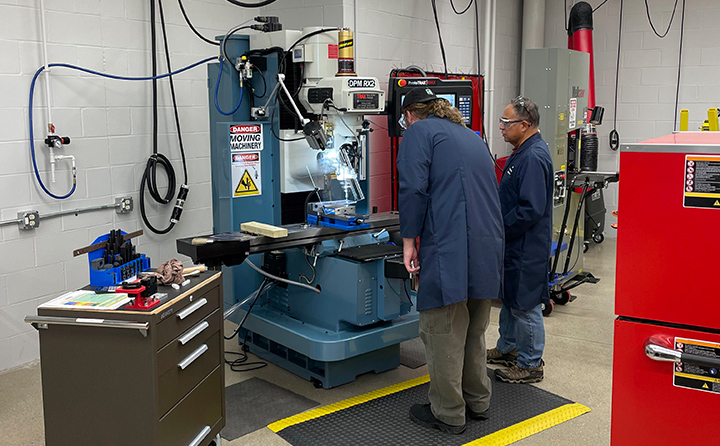The ongoing faculty-student research identifies gaps in current air quality monitoring and inequities tied to historical redlining in the air that different neighborhoods breathe.

Baldwin Wallace University research that takes air quality measurements in Cleveland down to the neighborhood level has already produced eye-opening results.
Now, BW has secured a $146,676 National Science Foundation (NSF) grant to continue the study that involves faculty-student collaboration, low-cost, cutting-edge technology and a vital community partnership.

BW computer science professor Dr. Brian Krupp is interested in how mobile technology and the Internet of Things (IoT) can benefit the community. He used a spring 2022 sabbatical to design the sensor research, which is being conducted in collaboration with BW's engineering department and PCs for People, the host of the neighborhood sensors.
"The research is looking at how can we leverage an Internet of Things platform with low-cost air quality sensors to detect differences in air quality in urban environments? So, can we show that air quality differs significantly in Slavic Village than what is being provided through the EPA's AirNow web portal?" Krupp explained.
Through the government's AirNow web portal in Cuyahoga County, an area of 459.07 square miles and a population of 1,245,337 (as of 2020), only one air quality sensor is shown to report the particulate matter (PM 2.5) levels.
"This matters because our research has found that there is a significant difference in reported air quality by the EPA and what we detect," Krupp continues. "This also matters because historical redlining has played a role in where more polluting industries are placed."

In the first phase of the interdisciplinary project, Krupp, engineering professor Dr. Jonathon Fagert, computer science and applied mathematics major Julia Gersey '24 and engineering graduate Tony Mlady '22 produced findings that were accepted for a poster presentation at the 20th ACM Conference on Embedded Networked Sensor Systems (SenSys 2022) in Boston.
The international SensSys conference is a "highly selective, single-track forum for research on systems issues of sensors and sensor-enabled smart systems."
Gersey, a Choose Ohio First STEM Scholar who aspires to attend graduate school, also won a travel grant to attend the conference featuring her work. The presentation, "Towards Fine-Grained Air Quality Sensing in Urban Environments," marked her second peer-reviewed acceptance as just a junior.
Mlady is now working at Engineered Technical Solutions (ETS).

The initial research was supported by the BW Lauria STEM Scholarship and a NASA Ohio Space Grant Consortium scholarship.
The National Science Foundation (NSF) award will fund a wider deployment of the project, adding additional sensors, including some right on the BW campus.
"We unleash more American innovation when we nurture Ohio talent," U.S. Senator Sherrod Brown (D-OH) said in a news release announcing the grant. "This award will help Baldwin Wallace University students advance our knowledge and continue Ohio's leadership in scientific innovation."